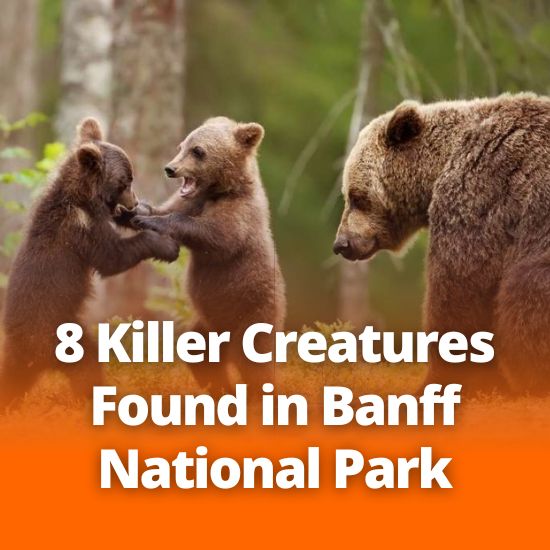
8 Killer Creatures Found in Banff National Park
Banff is one of Canada’ crown jewels with a breadth of stunning wildlife and scenic views – bit’s it’s not all sunshine and roses. There are real dangers inherit in this wildlife parks and we’re going to go through eight of the most dangerous creatures who call this park home.
If you want a quick overview of the park itself, check out our Flash intro https://nobullrv.ca/your-flash-intro-to-banff-national-park/
Bears: While Canada hosts a variety of bear species, if you come across one in Banff it is most likely a grizzly or black bear. Grizzlies are larger and distinguished by the hump between their shoulders, flatter facial profile and muzzle, and long claws. Black bears have a straight facial profile with a long snout, larger more prominent ears, and no hump – although both can appear in a variety of fur tones so you can’t always go off color.
We go into more depth on bear safety here But some basic tips are:
- Stop moving and stay calm
- Have your bear spray ready (in hand, cap off). Take note of wind direction and strength
- When in a group, stay together. Pick up small children and do not stray from the pack.
- Move away from the animal slowly and steadily.
- Assess the bear’s behavior to try and determine if it is going to approach you and why
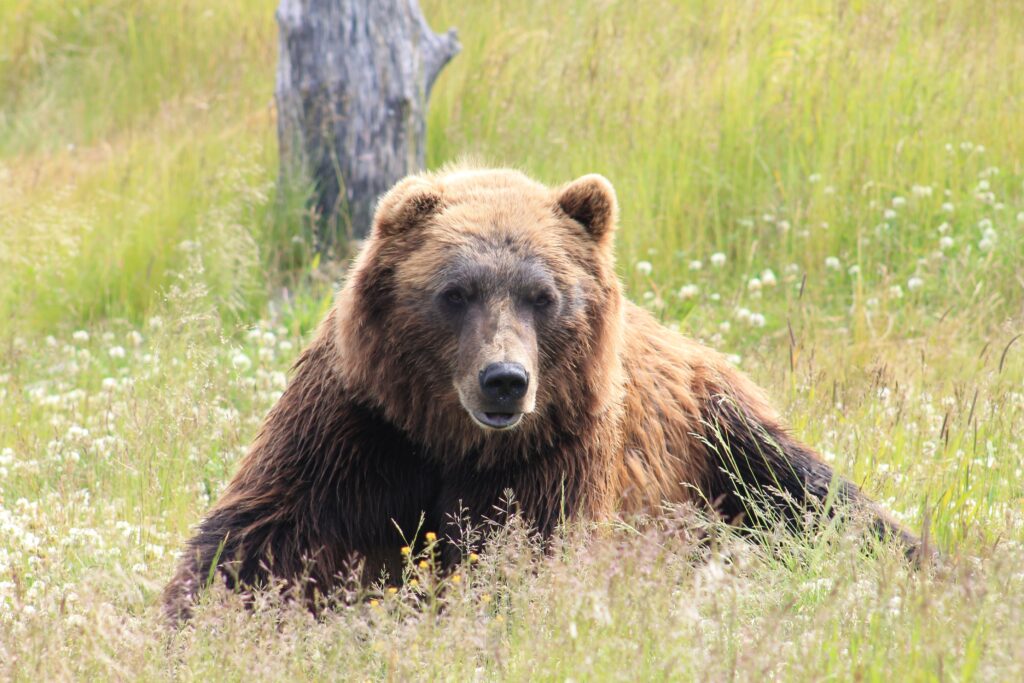
Coyotes: This ‘prairie wolf’ sits between the size of a fox and wolf with long fur that varies in shades of gray, red, and yellow-brown, and closely resembles a German Shepherd with pointed ears and muzzle, flat brow, and bushy tail. Previously relegated to the prairies and forests, their environment has blended with farmland and urban areas as human development has expanded. While it’s uncommon for them to stalk humans, they have also been known to attack livestock such as sheep, goats, calves, as well as dogs and cats. If you come across a coyote, do not run! This can trigger their prey drive to chase you.
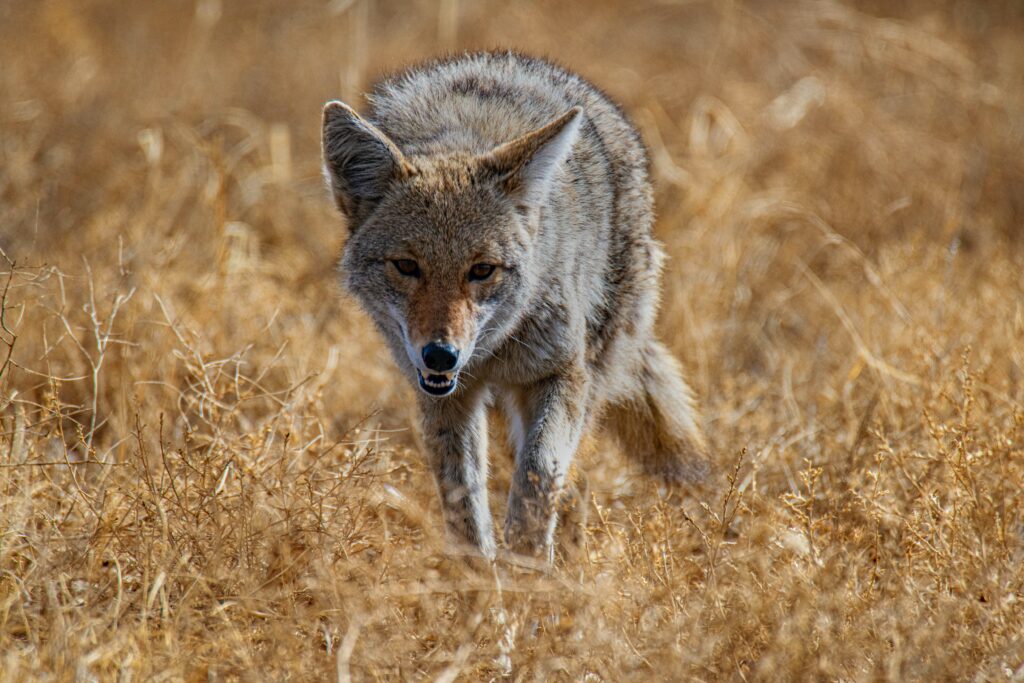
- Stop and stand still
- Make yourself big
- Be loud and assertive (if you have anything like a whistle bell or even a phone alarm, use it to make loud noise)
- Slowly back away DO NOT turn your back to them
Cougars: Sometimes called mountain lions, these skilled and solitary hunters have long legs, a long tail, and small head similar to an African cheetah and vary in color from a tawny brown to deep cinnamon. Relying on ambush style hunting they typically go after small prey animals, but have been known to stalk humans and attack domesticated animals such as cattle, sheep, and house pets.
- Do not approach the animal.
- Face the cougar, and retreat slowly – do NOT run or play dead.
- Try to appear bigger by holding your arms or an object above your head.
- Immediately pick up small children.
- Be aggressive. Shout, wave a stick or throw rocks to deter an attack.
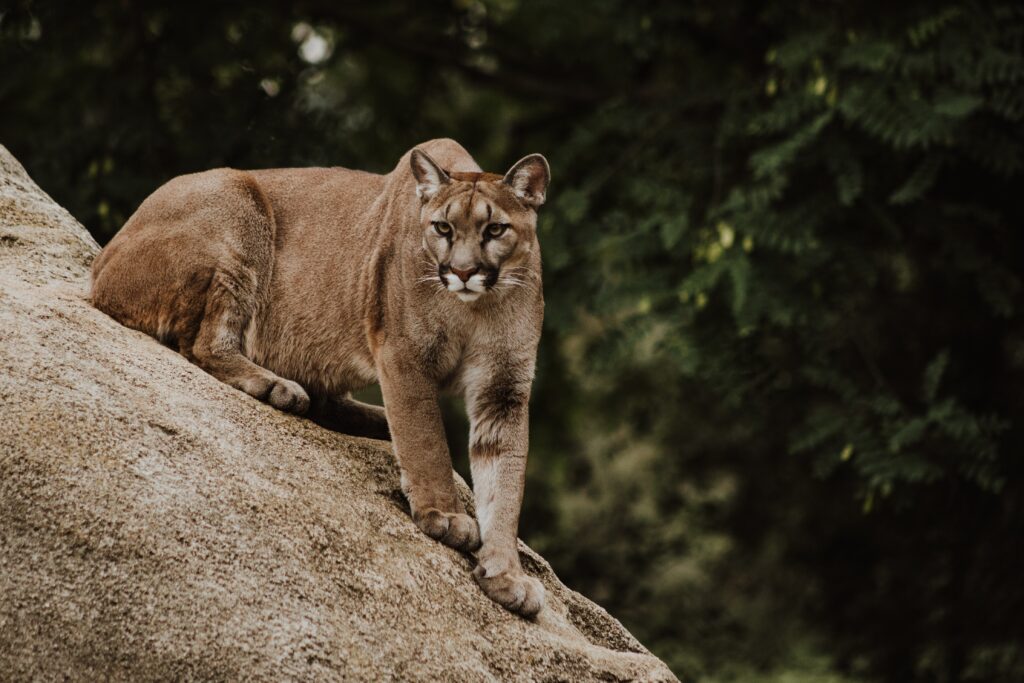
Wolverines: Not just an iconic Australian’s premier film role, this little weasel looks more like a small bear with its dark brown fur, large paws, and triangular face. An extremely rare creature to see, they are known to travel long distances and are typically solitary. Generally scavengers, they’re more likely to run and hide than attack, but do have a bite force that is still moderately strong with large canine teeth.
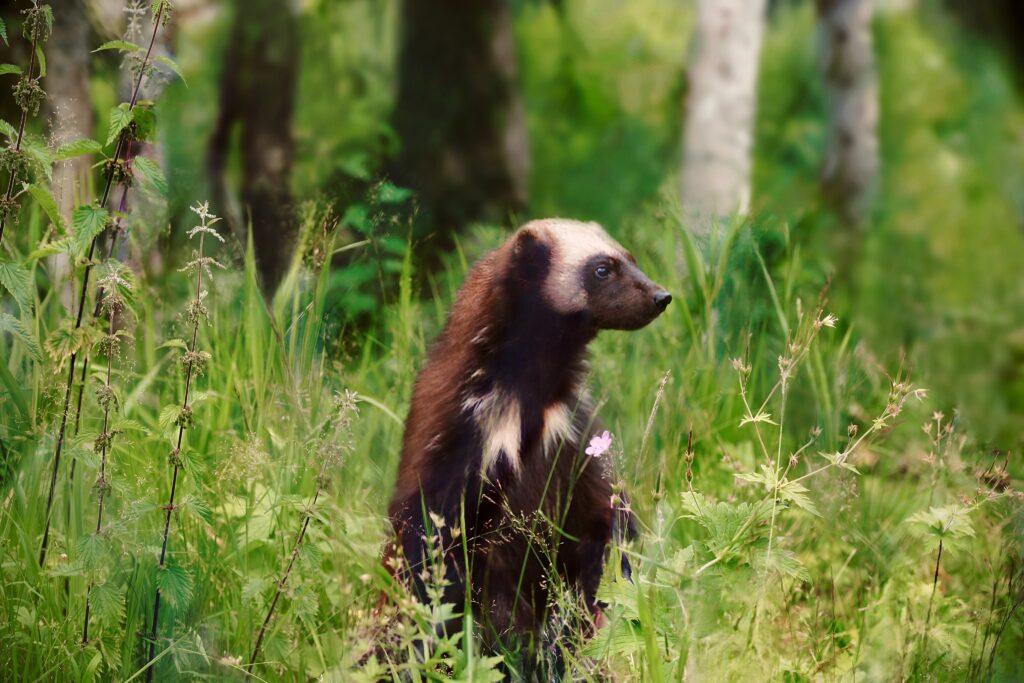
- Remain calm and do not make sudden movements
- Do not turn your back and run
- Slowly go back the way you came, keeping the animal in your sights
Because they are so rare to come across it is recommended you do not try and scare one off the way you would a coyote or wolf and instead use your best, common sense when retreating.
Wolves: The largest member of the dog family there are many species that call Canada home including the gray wolf, of which Canada hosts the second largest global population. Again resembling a German Shepherd with its lithe build, angular face and pointed ears, these pack hunters are generally reclusive and nocturnal, with it being unusual for them to approach humans and urban civilizations. However, they have been known to go after livestock.
- Discourage the wolf from coming closer. Wave your arms in the air and make noise.
- If they continue to approach, throw sticks and rocks at them.
- If they still approach back away slowly, while continuing to make noise and waving your arms.
- Do not turn your back or run. Pick up children and pets.
- Use bear spray if the wolf comes within spraying range.
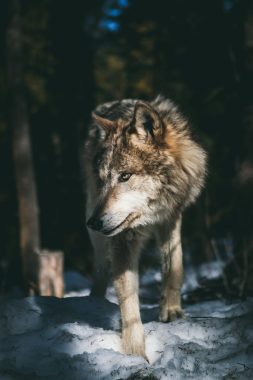
Elk: I know – this is not what you expect to find on a list of “killer creatures” but elk and the last two animals on this list are no joke. Standing almost 4-5’ tall at the shoulder, these creatures can kick and stomp hard enough to crack or crush a skull. And they aren’t afraid to do so. During calving season (May-June) females can become very aggressive to protect calves. Males may become aggressive during rutting season (September-October) if you come near them or their females.
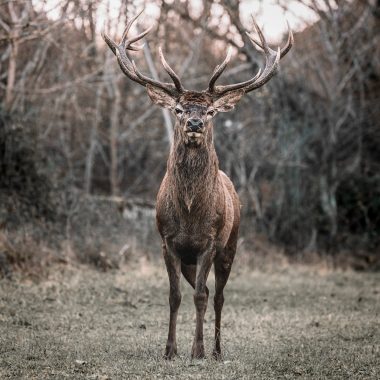
- Keep pets leashed, an unleashed dog may prompt an elk to become aggressive
- Act dominant if an elk approaches you, make yourself larger, maintain eye contact, and do not turn your back
- If you’re able, climb a tree or keep a tree/large object (i.e. boulder) between yourself and the elk
- Back away slowly from the area
Do not play dead. If you are knocked down or fall, get up and move to cover if possible or use an object like a walking stick or loose branch to protect yourself
Moose: There’s a reason this antlered monolith is a Canadian icon. Big and surprisingly versatile (they can dive up to 16 feet deep!) these animals are respected for a reason. We go into way more depth on why this incredible beast is a stand out of Canadian wildlife
- Keep your distance, if a moose crosses your path wait for it to move along, DO NOT APPROACH IT. Slowly back away and get something between it and you if you’re able
- If you are charged by a moose: run away and try to find cover such as a car, tree or building to hide within or behind. If you are knocked down before you reach safety, do not fight – curl up into a ball, knees to chest and protect your head.
- Do not allow your dog to harass moose and do not try to scare the moose off by yelling or throwing things.
- Never approach moose calves that have been left alone. The mother may have temporarily left the calf in a safe spot and is most likely not far away. The mothers can be very protective and may become aggressive in defense if they sense you nearby.
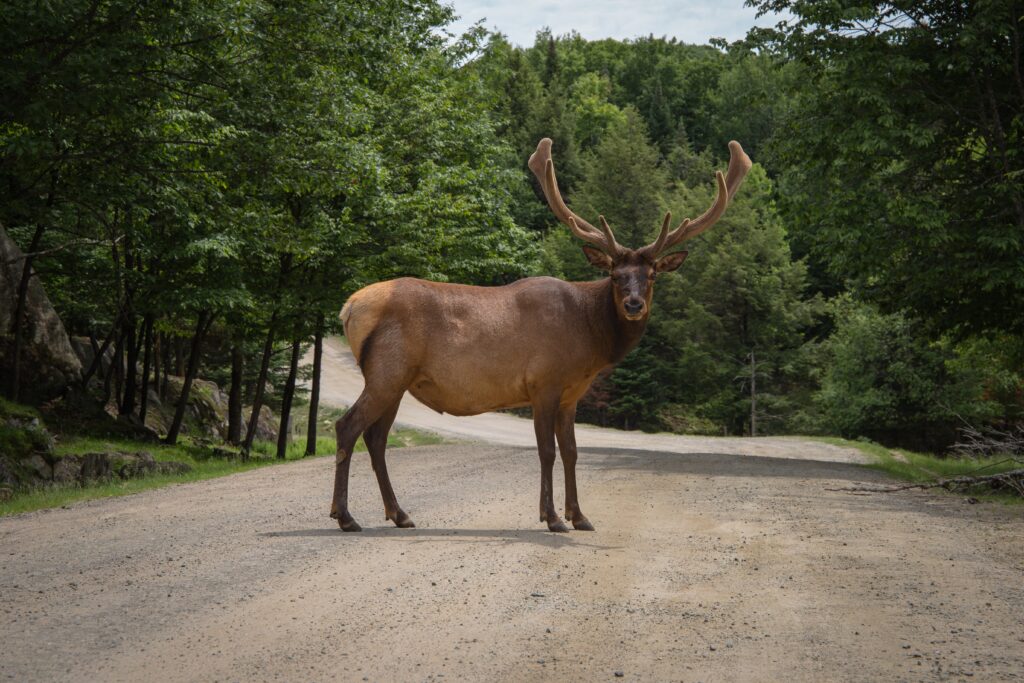
Bison: Finally, the bison. Once nearly hunted to extinction, this stalwart, gorgeous animal has a rich history in part with Canada’s Indigenous cultures and stands tall both historically, and physically. There are two varieties in Canada, the plains and wood bison. Looking very similar in coloration and stature, the biggest differences in appearance are the height of their hump, ‘beard’ shape and length, and the breadth of their chest and abdomen. Similar to elk, they can become aggressive if you approach their young or they interpret you as a threat overall.
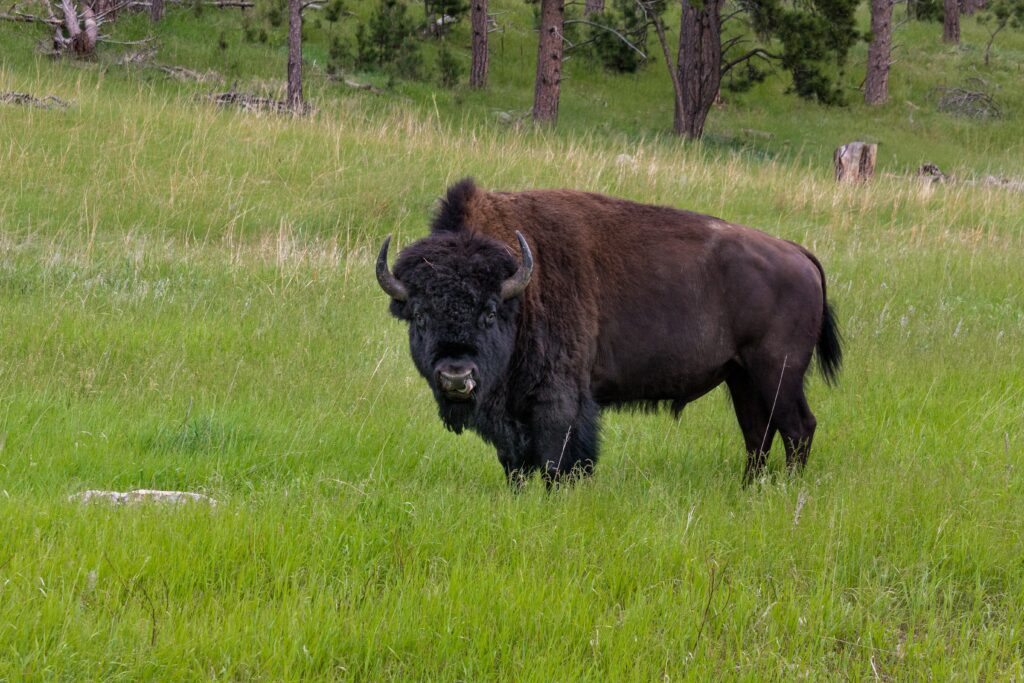
- Under no circumstances should you approach one no matter how docile they appear
- If you come across one do not turn your back or run, slowly back away where you came
- Keep children close and pets on a leash
- If you are in your vehicle as one crosses the road, allow them to do so. Do not honk at them
- Always give bison a wide berth and allow them to pass
Avoid Dangerous Animals in Banff National Park
This National Park can be treacherous if not approached with the appropriate caution and awareness. Keep your eyes on kids and pets, and don’t go out alone to isolated areas (remember the buddy system!) Educate everyone you’re with on how to stay safe so all your memories stay good – and don’t end in blood and tears.
(Information from the Government of Canada, the Canadian Encyclopedia, The Wildest, Alberta Parks, BC Parks, )
